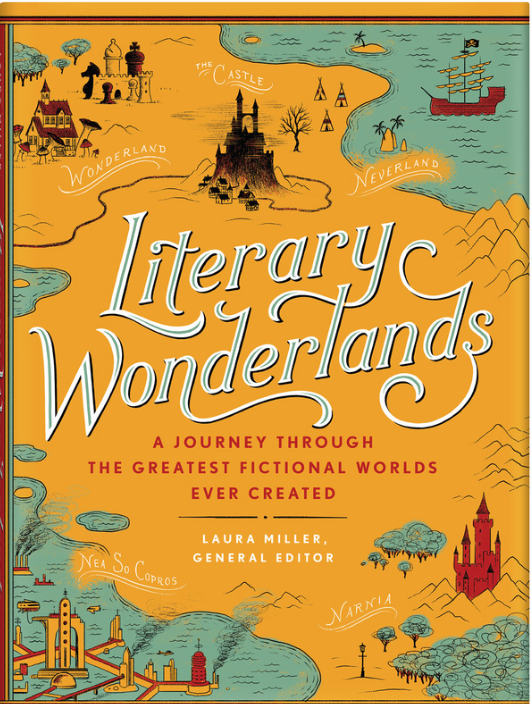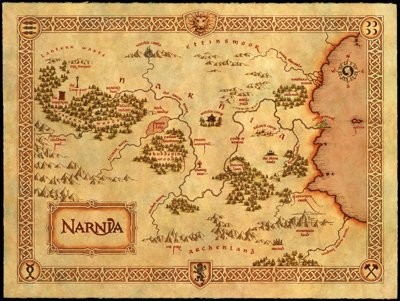Literary Wonderlands: A Journey Through the Greatest Fictional Worlds Ever Created. Laura Miller, General Editor. 320 pages, hardcover. Black Dog & Leventhal Publishers, 2016. (9 out of 10)

Narnia. Middle Earth. Oz. Wonderland. The worlds of fantasy and science fiction are part of what draws us to them. Among the longest-lasting are the ones that create their world so fully that you can picture where things are on the map–and indeed, many of our favorites have actual maps in their end pages. How many times have you flipped back to Mirkwood, to Cair Paravel, to the Emerald City to get oriented as your follow the heroes through their adventures? These are some of my favorite books, and what initially drew me to “Literary Wonderlands: A Journey Through the Greatest Fictional Worlds Ever Created.”
The worlds I already knew were what drew me to the book, but it quickly became much more, and much more engrossing than that initial interest. I was expecting a kind of gazetteer, with maps for each of the worlds. Maybe twenty different books total, from the 19th and 20th centuries. But the book is much more comprehensive than that. The worlds begin with “The Epic of Gilgamesh” and “The Odyssey,” and the final book included is Salman Rushdie’s 2015 work “Two Years Eight Months and Twenty-Eight Nights.” I was expecting traditional English and American literature — the kind of thing I read in my high school English classes twenty-mumble years ago. But there are books from Japan, Russia, Spain, Argentina. All with English translations of course, but each opening my eyes to larger worlds beyond the traditional science fiction and fantasy I was already familiar with.

Most of the entries are just two pages long, but there are many that are twice that. The full-color illustrations throughout highlight are frequently the contemporary illustrations from the books, with other photographs, film stills, and works of art thrown into the mix.
There are many classic works that I don’t typically think of as being “genre” literature, but are included here — things like “The Divine Comedy” and “The Tempest” definitely build worlds that are unique to those stories, as do Wagner’s “The Ring of the Nibelung” and Twain’s “A Connecticut Yankee in King Arthur’s Court.” While I was expecting an atlas or gazetteer of maps, “Literary Wonderland” is more thoughtful than that. Most of the entries don’t even have maps, and the essays range from analyses of the landscape and fictional worlds to biographies of the author, and what life experiences shaped the creation of those worlds.

While most of the entries make solid connections to the books and characters, there are a few that stand out as…not. The biggest disconnect for me was “Peter Pan in Kensington Gardens.” I learned a lot from it — the history of Pan publishing by J.M. Barrie — but what I didn’t get was any Neverland. At all. For me, that’s one of the classic otherworlds that the book would cover — in fact, it’s on the cover of the book, immediately above the title. Why exclude an analysis of one of the most interesting, imagination-fueling locales in fantasy literature?
Missing-Neverlands aside, this was an entertaining and engrossing read. It also reminded me of the classics I haven’t read (“Discworld”) and made me reevaluate some of the ones I have (“A Clockwork Orange.”) It also added about thirty titles to my To Read stack, which is already right around eight hundred titles. I have time.